Related Research Articles

MGM Records was a record label founded by the Metro-Goldwyn-Mayer film studio in 1946 for the purpose of releasing soundtrack recordings of their musical films. It transitioned into a pop music label that continued into the 1970s. The company also released soundtrack albums of the music for some of their non-musical films as well, and on rare occasions, cast albums of off-Broadway musicals such as The Fantasticks and the 1954 revival of The Threepenny Opera. In one instance, MGM Records released the highly successful soundtrack album of a film made by another studio, Columbia Pictures's Born Free (1966).
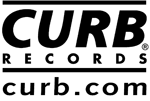
Curb Records is an American record label started by Mike Curb, originally as Sidewalk Records in 1963. From 1969 to 1973, Curb merged with MGM Records where Curb served as President of MGM and Verve Records.
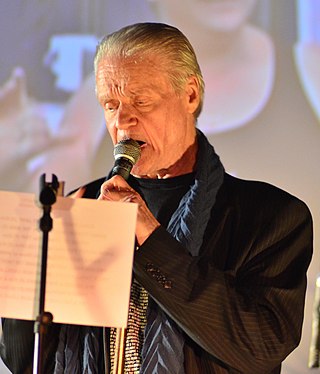
Kim Vincent Fowley was an American record producer, songwriter and musician who was behind a string of novelty and cult pop rock singles in the 1960s, and managed the Runaways in the 1970s. He has been described as "one of the most colorful characters in the annals of rock & roll", as well as "a shadowy cult figure well outside the margins of the mainstream".

The Osmonds were an American family music group who reached the height of their fame in the early to mid-1970s. The group had its best-known configurations as a quartet and a quintet. The group has consisted of siblings who are all members of a family of musicians from Ogden, Utah, and have been in the public eye since the 1960s.
Billy Vera is an American singer, songwriter, actor, author, and music historian. He has been a singer and songwriter since the 1960s, his most successful record being "At This Moment", a US number 1 hit in 1987. He continues to perform with his group Billy Vera & The Beaters and won a Grammy Award in 2013.

The West Coast Pop Art Experimental Band (WCPAEB) was an American psychedelic rock band formed in Los Angeles, California, in 1965. The group created music that possessed an eerie, and at times sinister atmosphere, and contained material that was bluntly political, childlike, and bizarre. Representing different musical backgrounds among band members, the group, at times, resembled a traditional Byrds-esque folk rock ensemble, but the WCPAEB also, within the same body of work, recorded avant-garde music marked by multi-layered vocal harmonies.

James Boyd Greenspoon was an American keyboard player and composer, best known as a member of the band Three Dog Night.

Volume 3: A Child's Guide to Good and Evil is the fourth album by the American psychedelic rock band The West Coast Pop Art Experimental Band (WCPAEB), and was released on Reprise Records in May 1968. By the time the group commenced recording Volume 3, guitarist Danny Harris had excused himself from the WCPAEB, reducing their numbers to a trio. As with the WCPAEB's earlier work, the album saw the band continue to blend psychedelic influences and complex studio techniques, and was marked by a bizarre fusion of innocence and malice in the band's lyrics. Volume 3 featured the WCPAEB's most ambitious music to date, and the striking cover art of John Van Hamersveld, yet it failed to sell in sufficient copies to chart nationally. In more recent times, the album has been considered the band's most accomplished work and a masterpiece of the psychedelic genre.
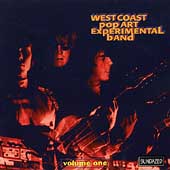
Volume One is the first album recorded by the psychedelic rock band the West Coast Pop Art Experimental Band. It was first released in 1966 on the small FiFo Records label. It was reissued in both compact disc and vinyl in 1997 by Sundazed. The album features covers of pop classics such as Richard Berry's "Louie, Louie" and the Kinks' "You Really Got Me". The songs mellow out into a blues/folk style with covers of Bob Dylan songs.
Baker & Myers was an American country music duo composed of singer-songwriters Gary Baker and Frank J. Myers, who first worked as songwriters for other country music artists; one of their most notable compositions is John Michael Montgomery's 1994 crossover hit "I Swear", which won the Grammy Award for Best Country song a year later; this song was later recorded by pop group All-4-One as well.
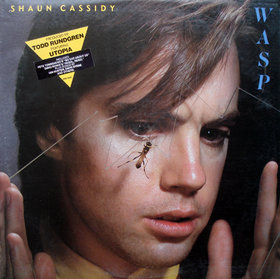
Wasp is the fifth and final studio album by teen idol Shaun Cassidy, released in 1980. In an attempt to salvage a sinking pop career, Cassidy recruited Todd Rundgren to help "reinvent" his music career. Members of Rundgren's group Utopia also played on the record, and the work had a decidedly "new wave" feel.
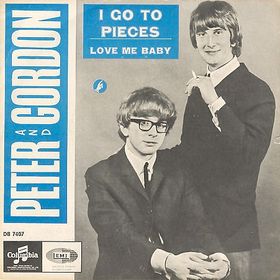
"I Go to Pieces" is a song written by Del Shannon which became a top ten hit for Peter and Gordon on 20 February 1965. The duo's fourth single, it was their first not to be written by John Lennon and Paul McCartney.

J. Michael Huey is an American drummer and producer. He has played with a diverse group of artists in genres including Rock/Pop/Country/R&B such as Glenn Frey, Joe Walsh, Juice Newton, Etta James, and Lindsey Buckingham. Huey is also noted for his work on film and television soundtracks as well as numerous world tours with Rock & Roll Hall of Fame Inductees. He has also worked as a record producer for major record labels including MCA and Warner Bros.

Where's My Daddy? is the fifth album by the American psychedelic rock group, the West Coast Pop Art Experimental Band, and was released in 1969 on Amos Records, which was owned by Jimmy Bowen. Amos Records signed them after Reprise Records dropped the band from their label following the commercial failure of their first three albums. It features compositions by Danny Harris, Michael Lloyd and Shaun Harris with lyrics by Bob Markley. On the original pressing, Lloyd's contributions were not noted on the back cover as a type of punishment by Markley for recent disagreements with each other. However, promotional copies do show Michael Lloyd's contributions noted on the back cover.
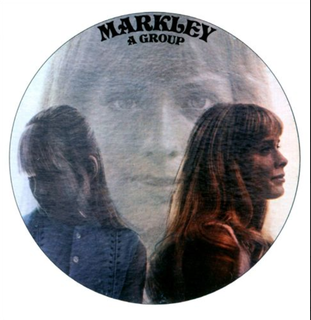
Markley, A Group is the sixth and final album by the American psychedelic rock group, the West Coast Pop Art Experimental Band, and was released in 1970 on Forward Records, owned by Mike Curb. In this case, the album was released under another group name, Markley A Group, as decided by the group owner, Bob Markley. It features compositions by Danny Harris, Michael Lloyd and Shaun Harris with lyrics by Bob Markley. The content is simple and soft, reminiscent of the band's earlier work. Lyrically, however, the band was continuing the trend set by Where's My Daddy?, in which they describe class resentment, paranoid psychedelia, and an unsettling interest in young girls. Although Shaun Harris creates compositions for the album, he only appears on "Outside/Inside". After this album, like those before it, failed to achieve success, the band ceased to exist.
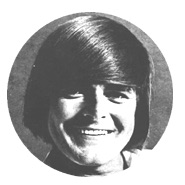
Robert H. Markley was an American singer-songwriter and record producer who co-founded the psychedelic rock band The West Coast Pop Art Experimental Band, in the late 1960s, and became one of the most controversial figures that emerged from the era.
St. John Green was an American psychedelic rock band who released one self-titled LP, produced by Kim Fowley and Michael Lloyd, in 1968. The album has been described as "by turns frightening, dark, funny and stupid as it reeks of bad trip freak outs in matte black painted rooms with no furniture lit only by a single red bulb and burning cigarette ends.... weirdly dark and epic."
Cotton, Lloyd and Christian were a soft rock trio comprising singer-songwriters Darryl Cotton from Australia, and Michael Lloyd and Chris Christian from the United States. They achieved some success in the mid-1970s.
Shaun Harris is an American musician best-remembered as the bassist of the psychedelic rock band the West Coast Pop Art Experimental Band (WCPAEB). Throughout his music career, Harris worked closely with Michael Lloyd on projects outside the WCPAEB including the Rogues, California Spectrum, and Brigadune. In 1973, he recorded a self-titled solo album on Capitol Records.

The Clingers was one of the first rock-and-roll girl bands. They started as a barbershop quartet and recorded five singles before transitioning to playing their own instruments in a rock band in 1966. The members consisted of the four Clinger sisters: Patsy (drums), Debra (bass), Melody (guitar) and Peggy (keyboard). They performed on many variety shows and with other artists to promote their music. Melody, the oldest of the sisters, was born in 1947 and sang duets with her mother before joining her sisters in a barbershop quartet, known as The Clinger Sisters, starting in 1956. Val Hicks became their vocal coach, and the family moved to California, where the Clinger Sisters appeared on The Andy Williams Show with the Osmonds and in several episodes of The Danny Kaye Show. They signed with Vee-Jay Records in 1964, recording three singles for them. They spent summers performing in fairs, headlining with Liberace and Donald O'Conner at the Great Allentown Fair. They released two singles independently in 1965.
References
- 1 2 3 4 Michael Lloyd autobiographical note, IMdB.com. Retrieved 30 January 2015
- 1 2 3 Michael Lloyd, Lifetime Achievement Award Recipient, interviewed by Michael Laskow, TAXI.com. Retrieved 30 January 2015
- ↑ Richie Unterberger, "The New Dimensions", Allmusic. Retrieved 30 January 2015
- ↑ Tim Forster, "The Legend of: THE WEST COAST POP ART EXPERIMENTAL BAND", Ptolemaic Terrascope Archived 2015-03-20 at the Wayback Machine . Retrieved 30 January 2015
- ↑ Smoke, biography by Bryan Thomas, Allmusic.com. Retrieved 29 January 2015
- 1 2 3 Michael Lloyd, Credits, Discogs.com. Retrieved 30 January 2015
- 1 2 3 Michael Lloyd biography, FilmReference.com. Retrieved 30 January 2015
- ↑ Whitburn, Joel (2003). Top Pop Singles 1955-2002 (1st ed.). Menomonee Falls, Wisconsin: Record Research Inc. p. 130. ISBN 0-89820-155-1.
- ↑ "It's Not Dark Yet: The Smoke", Rockasteria, June 22, 2012. Retrieved January 5, 2024
- ↑ "Independent Video Network Is Launched By Studio M", Billboard, 23 December 2000, p.69
- ↑ Studio M: Corporate Information: Michael Lloyd. Retrieved 31 January 2015